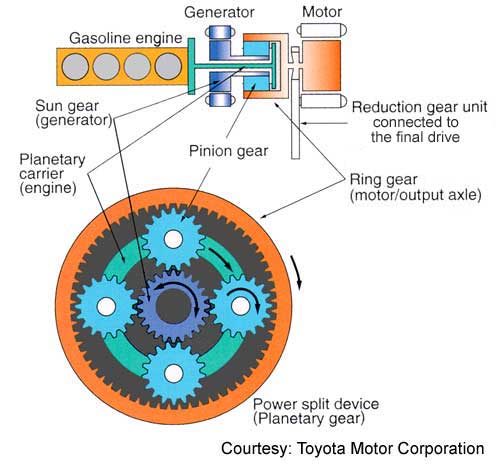Quote:
Originally Posted by mpg_numbers_guy

The shorter wheels theoretically should give you shorter gearing, but I'm not entirely sure how the Prius CVT works - it may be completely load based and not have any kind of rubber band style gear ratios (i.e., min RPM for a given speed). It would be interesting to see speed vs MPH on level ground with the old wheels/tires versus the new wheels/tires - using RPM monitoring through Torque or a Scangauge, and a GPS speedometer.
|
I think it's somewhat fallacious to call the Prius transmission a CVT. I mean, it is continuously variable, but it's an entirely different beast than the CVTs used on every other car (except the Chevy Volt, which has a nearly identical box).

I'd argue it's the ultimate gearbox for mating a gasoline engine and electric motor, though Honda's approach in their new hybrids is proving surprisingly effective.
The idea is this: You have three parts - a Sun gear (center), planet gears (between center and ring), and a ring gear. You connect the engine to one, the electric motors to another, and the wheels to the last one.
Let's say you have the engine spinning the sun gear and the electric motors spinning the planet gear(s). You can leave the gas engine at a single speed and load (let's say, the peak efficiency speed and load), and vary the speed of the car (even into reverse) by spinning the electric motor faster or slower. If you need more power, you spin the gas engine faster and the electric motor slower. You can really get any RPM/load/vehicle speed combination you want, and the gearbox has no clutches or wear parts.
The benefits of Honda's approach (no gearbox at all) are that it's lighter, less expensive, and marginally more efficient when the engine is directly driving the wheels, since there are fewer gears.